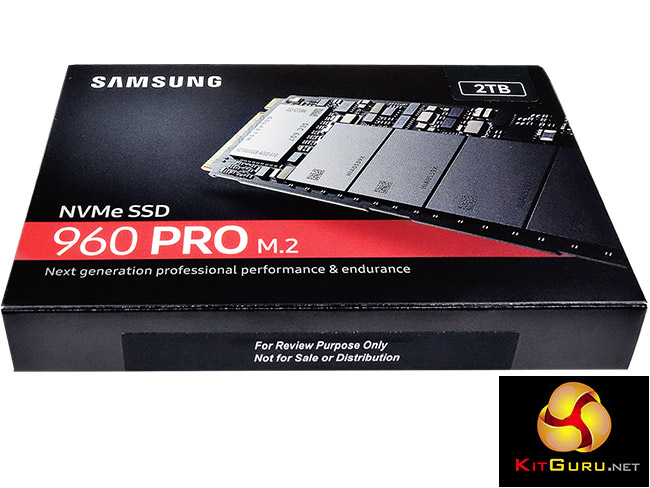Samsung's 48-layer V-NAND shows the capacity potential of the various flavours of 3D NAND that are in or soon will be in production. and further down the road there is QLC (quad-level cell) technology with the prospect of even larger capacities. There are huge 2.5in SSD drives already (Samsung's own 16TB PM1633a for example) but to be able to cram 2TB of storage onto something as small as a 2280 format M.2 drive is still mightily impressive.
The drive has some advanced thinking in its design – from the Hexadecimal Die Packaging (HDP) that Samsung uses to stack up the layers inside the NAND to get very dense packages, to the novel idea of stacking the cache IC on top of the controller.
Details about the new Polaris controller are pretty thin on the ground at this time, but what is known is that its a 5 core IC with one of its cores dedicated to host communications leaving the other four cores to deal solely with Flash management. The drive's performance is a testimony to the new chip's design.
To say that the SSD960 PRO is a fast drive is a bit of an understatement – it really flies along. Samsung quote Sequential read/write figures for the 2TB drive of 3,500MB/s and 2,100MB/s, respectively, and although we couldn't quite reach those figures during testing with the Windows NVMe driver, at 2,975MB/s for reads and 1,912MB/s for writes in the ATTO benchmark, it's the fastest drive we have seen to date by quite some margin. It is also much faster by some magnitude, particularly when it comes to write performance, than its predecessor the SSD950 PRO. It's the same story with the random 4K performance – the drive completely trounces the older SSD in both reads and, again, particularly write performance.
There were some thermal issues with the SSD950 PRO when it was pushed hard. To get around any potential thermal problems with the SSD960 PRO, Samsung has come up with the novel idea of using a heat-spreading label on the rear of the drive. This label may look like a pretty standard label but it is made up of 6 layers. The all-important copper-based heat spreader layer lies between two layers of adhesive. With this label, the dynamic thermal guard (DTG) trigger point has improved by around 30 seconds compared to the DTG trigger of the SSD950 PRO
The drive also supports both AES 256-bit encryption and TCG/Opal to secure any data.
The 2TB version of the SSD960 PRO is priced at $1299 in the US. Current UK pricing is £1249.99 at Overclockers UK. The 512GB version is £329.99 and the 1TB variant is £599.99.
Discuss on our Facebook page HERE.
Pros
- Performance
- Huge capacity for an M.2 drive
- 5-year warranty
Cons
- Performance comes at a cost
Kitguru says: Samsung showed what an M.2 SSD was capable of with the SSD950 PRO, but the SSD960 PRO takes it to a whole new level in terms of capacity and performance.
 KitGuru KitGuru.net – Tech News | Hardware News | Hardware Reviews | IOS | Mobile | Gaming | Graphics Cards
KitGuru KitGuru.net – Tech News | Hardware News | Hardware Reviews | IOS | Mobile | Gaming | Graphics Cards






You have some kind of bottleneck since you don’t achieve maximum specification speeds.
This will set you back at least 3 grand.
its est at $1299 USD lol.
The IOMeter IOPS results aren’t near the specification performance because a different test procedure is used to the one that gives Samsung its specified figures. IOPS numbers can change quite significantly based on the tested QD and number of Threads.
that is truly impressive, I would like to see some reviews for the lower capacity models
Should be released on 10/30 (or 30/10 for you euro’s) here in the states, and I cannot wait to get my 2tb 960 pro! I’ve literally been postponing a whole new build just to wait for this drive, but it’s going to be well worth the wait!
“…that’s a bit of an understatement to say the least as Samsung quote Sequential read/write figures for the 2TB drive as 3,500MB/s and 2,100MB/s respectively. Incidentally, they are the same figures as for both the 512GB and 1TB drive..”
This text is directly from the first page of the review….did you even read the article?
http://www.tweaktown.com/reviews/7909/samsung-960-pro-2tb-2-nvme-pcie-ssd-review/index.html
Tweaktown’s review…only they test drives by making them the OS drive, then filling it to 75% capacity to more accurately mimic the conditions a real user will be using the drive under…
just because it is rated for the same speed, doesn’t mean that it will perform exactly the same, the random read/write performance isn’t as fantastic as the ratings are showing